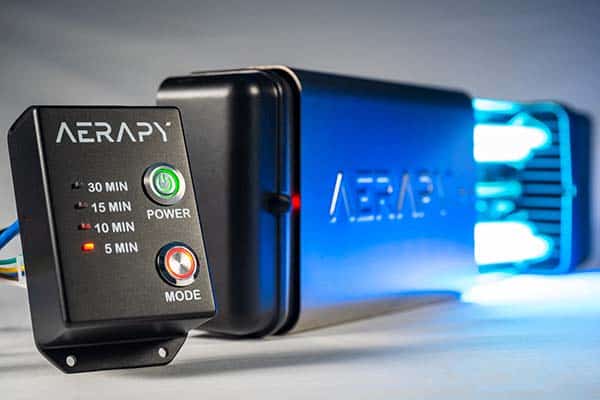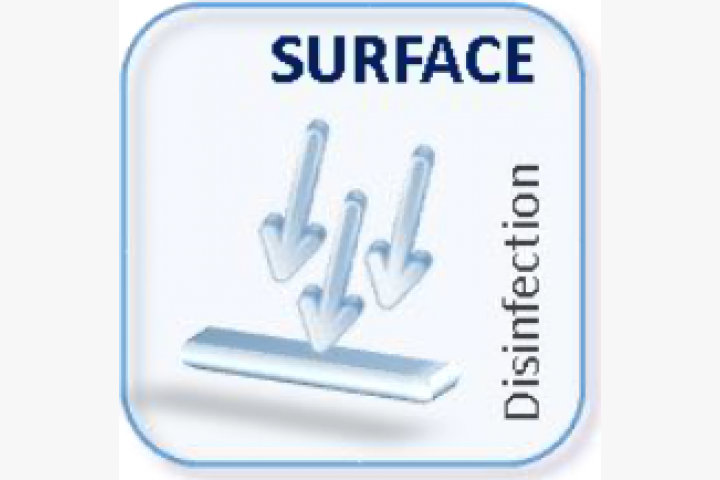Discover the Perks of UV Surface Disinfection: Reliable and Eco-Friendly Hygiene
UV Disinfection: The Cutting-Edge Innovation Transforming Hygiene Practices
In the world of cleanliness methods, one innovation has emerged as a game-changer: UV disinfection. With its ability to eliminate unsafe virus, this cutting-edge modern technology is revolutionizing the way we approach sanitation and health. Just how does UV disinfection job, and what are the benefits it provides? From healthcare settings to food handling, UV disinfection is making its mark in numerous industries. In this conversation, we will discover the details of this transformative modern technology and look ahead to its promising future.
How UV Sanitation Works
UV sanitation works by utilizing ultraviolet light to ruin or suspend microorganisms, supplying a extremely reliable and chemical-free approach of sanitation. This modern technology harnesses the power of short-wavelength UV-C light, which can damaging the DNA and RNA of bacteria, thus providing them not able to cause and replicate injury.
The process begins with the installation of UV sanitation systems, which include UV lights that discharge UV-C light. These lamps are purposefully placed in locations where microbial contamination is an issue, such as water treatment plants, health centers, laboratories, and food handling facilities.
When microorganisms are exposed to UV-C light, the photons penetrate their cell wall surfaces and get to the DNA and RNA within. The high-energy UV-C photons disrupt the hereditary product by creating bonds between surrounding nucleotides, resulting in the development of thymine dimers. These dimers protect against the microorganisms from duplicating, providing them safe.
UV sanitation is highly reliable against a large array of microorganisms, consisting of microorganisms, parasites, and viruses. It is specifically reliable versus waterborne virus like E. coli, Giardia, and Cryptosporidium. UV sanitation is a chemical-free technique, removing the demand for possibly unsafe disinfectants and reducing the threat of harmful disinfection byproducts.
Benefits of UV Sanitation
UV disinfection supplies countless benefits in the field of cleanliness, making it a highly preferred approach for efficiently removing damaging bacteria. Unlike traditional sanitation methods that count on chemicals, UV disinfection makes use of ultraviolet light to damage the DNA of bacteria, rendering them not able to recreate and cause infections.

UV sanitation is additionally highly functional in its applications. It can be made use of in numerous setups, including health centers, colleges, food handling centers, and water therapy plants. UV disinfection systems can be quickly integrated into existing cleanliness techniques, giving an added layer of defense against contagious diseases.
In enhancement to its efficiency and adaptability, UV disinfection is additionally eco friendly. It does not create any unsafe byproducts or deposits, making it a risk-free and sustainable method for sanitation - uv surface disinfection. Additionally, UV disinfection calls for marginal upkeep and has a lengthy life expectancy, leading to cost savings in the long run.
UV Sanitation in Health Care Settings
In health care setups, UV sanitation has arised as an innovative method for effectively removing damaging bacteria. Making use of UV light to decontaminate surface areas and tools has actually gotten popularity as a result of its capability to offer an added layer of security against virus. UV disinfection works by giving off ultraviolet light at a specific wavelength that is dangerous to bacteria, viruses, and various other bacteria. This technology supplies several benefits in healthcare settings.
First of all, UV sanitation is a non-chemical approach, making it an eco-friendly option compared to standard sanitation techniques that often include using harsh chemicals. The usage of UV light removes the need for chemical disinfectants, reducing the danger of hazardous residue or chemical exposure to both clients and medical care employees.
Additionally, UV sanitation is extremely effective in eliminating a variety of bacteria, consisting of drug-resistant bacteria such as MRSA and C. difficile. It offers a constant and dependable disinfection process, making sure that all surfaces and equipment are completely sanitized, also in hard-to-reach locations.

UV Disinfection in Food Processing
The application of UV sanitation expands beyond health care settings and locates substantial worth in the world of food handling. uv surface disinfection. UV disinfection innovation is becoming significantly popular in the food industry as a result of its capability to effectively get rid of hazardous virus and improve food security
Among the primary advantages of UV disinfection in food handling is its capacity to target a vast array of microorganisms, consisting of molds, germs, and infections. By utilizing UV light at certain wavelengths, it is feasible to disrupt the DNA and RNA of these microorganisms, making them unable to create or duplicate injury. This modern technology can be related to numerous phases of the food processing chain, consisting of surface area sanitation, devices sterilization, and water therapy.
UV disinfection offers a chemical-free and non-thermal technique of sterilizing food products. Unlike traditional sanitation methods that count on chemicals or heat, UV innovation does not leave any type of deposit or alter the preference, appearance, or nutritional worth of the food. This makes it a suitable option for markets that require stringent adherence to high quality standards.
Additionally, UV disinfection systems are very easy to install and operate, requiring marginal maintenance. They can be incorporated into existing processing lines without triggering substantial disruptions to the production procedure. Furthermore, UV systems have a quick treatment time, enabling continuous processing and reducing downtime.
The Future of UV Sanitation

One area where UV sanitation is anticipated to make significant innovations remains you can check here in the field of health care. With the surge of antibiotic-resistant microorganisms and the demand for extra efficient sanitation techniques, UV light has the prospective to play an essential duty in decreasing healthcare-associated infections. UV sanitation systems can be used to decontaminate surface areas, equipment, and also the air in health care centers, helping to stop the spread of damaging virus and improve individual safety.
Another market that could benefit from improvements in UV sanitation technology is the food industry. UV light has already confirmed to be an efficient approach for decontaminating food products and decreasing the danger of foodborne health problems. As modern technology improves, we can anticipate to see much more cost-effective and effective UV sanitation systems being carried out in food handling plants, making certain that the food Click This Link we consume is secure and without harmful microorganisms.
Conclusion
Finally, UV sanitation is a sophisticated innovation that is transforming cleanliness practices in healthcare Learn More settings and food handling. By making use of UV light to kill or shut off microbes, it uses countless benefits such as safety, effectiveness, and efficiency. With ongoing advancements in this area, UV sanitation holds great prospective for the future of cleanliness, supplying a dependable and sustainable solution for preserving clean and sanitary atmospheres.
UV disinfection is a chemical-free method, removing the need for potentially dangerous anti-bacterials and decreasing the threat of harmful sanitation spin-offs.
Unlike traditional disinfection approaches that rely on chemicals, UV sanitation uses ultraviolet light to damage the DNA of microorganisms, making them unable to reproduce and create infections. Unlike typical sanitation approaches that rely on chemicals or heat, UV technology does not leave any type of deposit or change the taste, texture, or dietary worth of the food. As innovation boosts, we can expect to see more cost-effective and efficient UV disinfection systems being carried out in food processing plants, ensuring that the food we take in is secure and complimentary from unsafe microorganisms.
In final thought, UV sanitation is an advanced technology that is changing hygiene practices in health care setups and food processing.